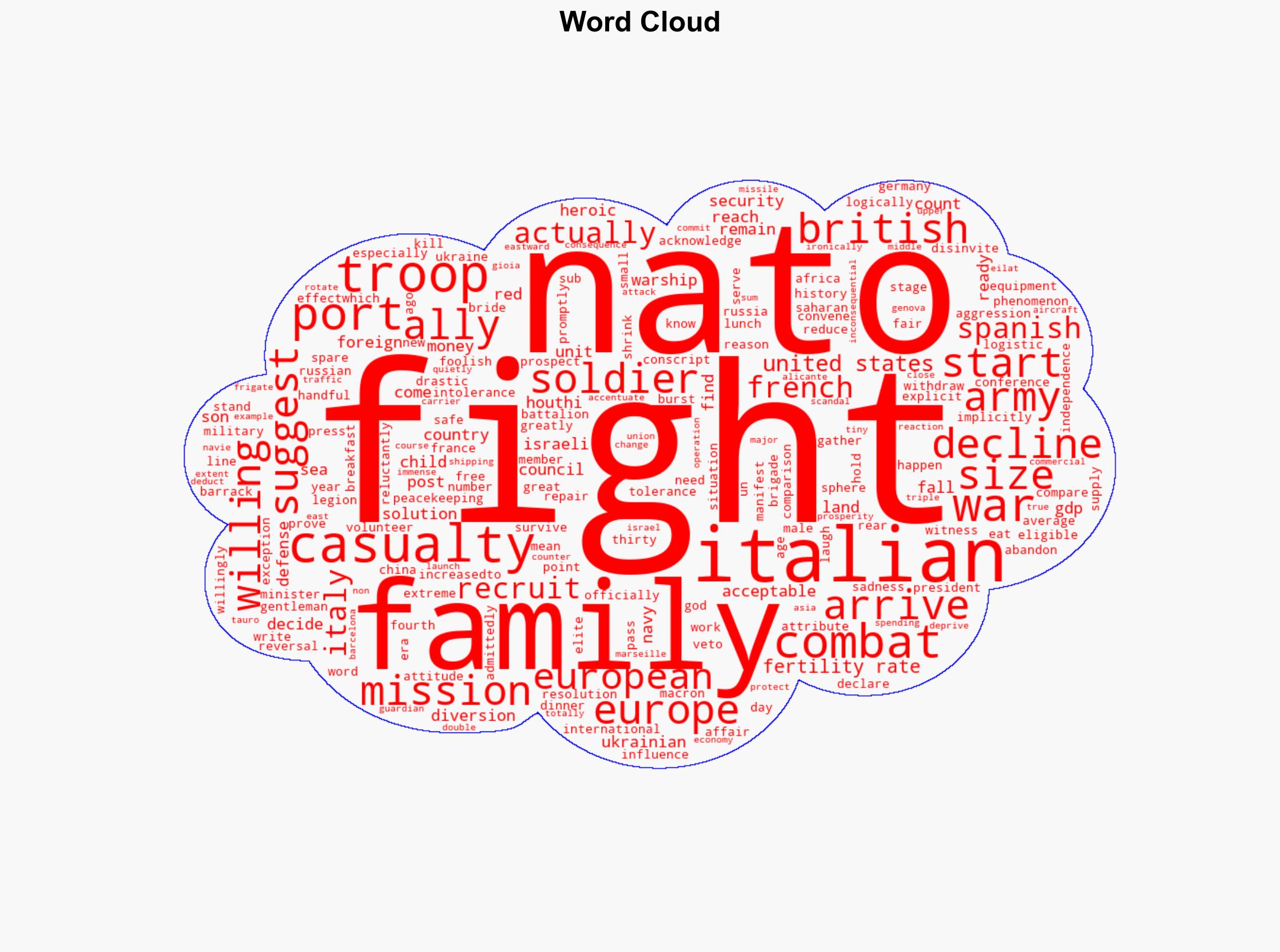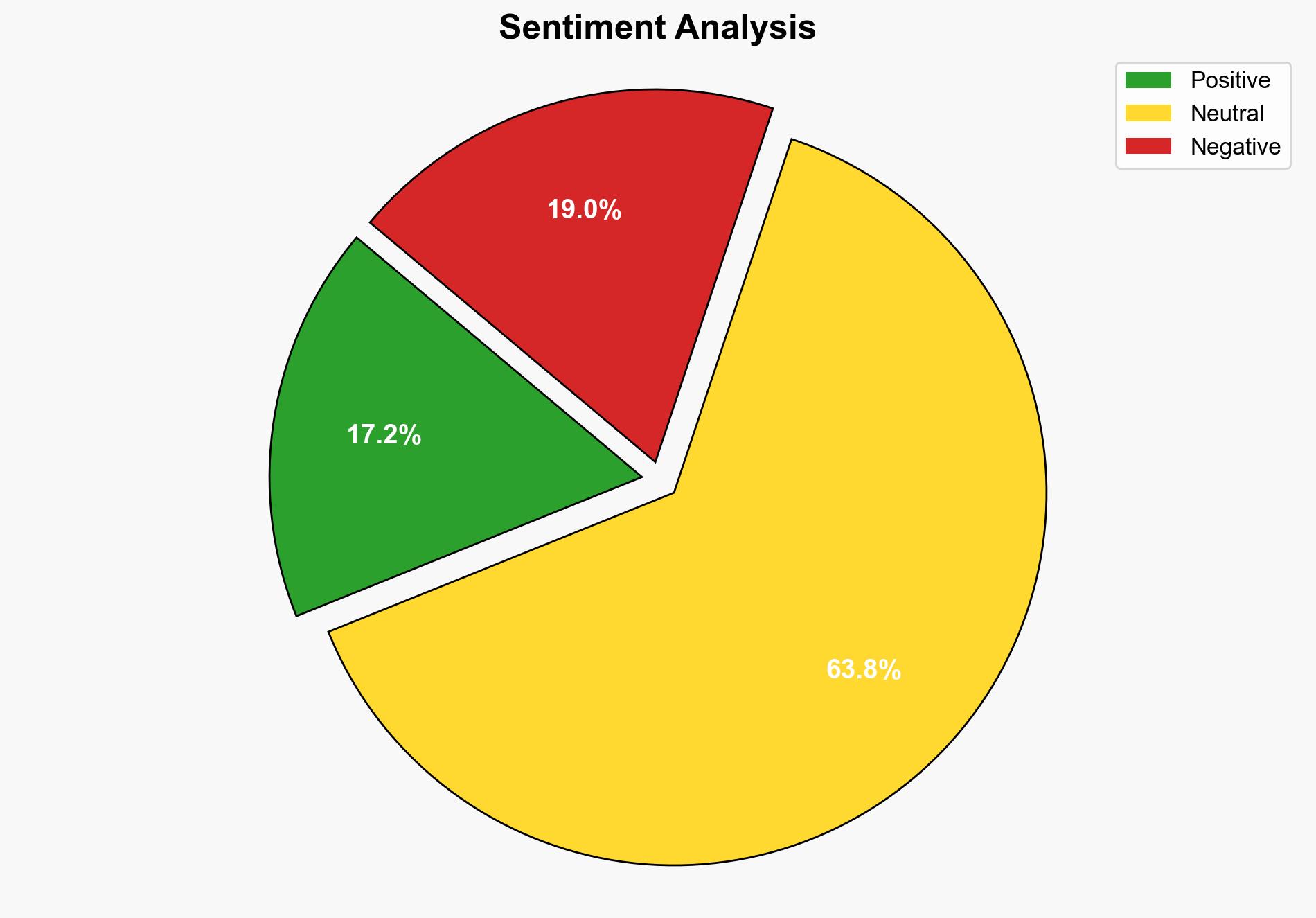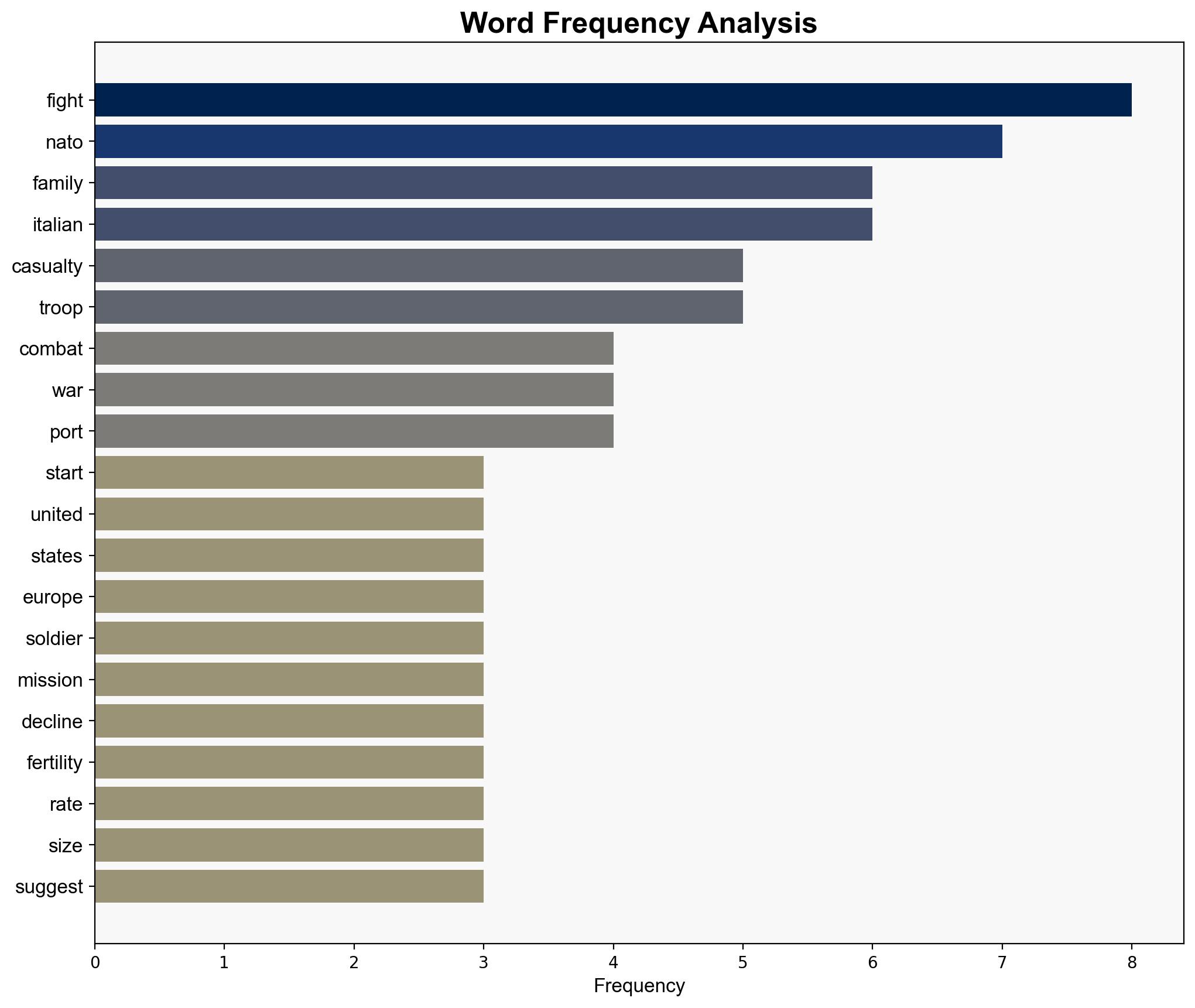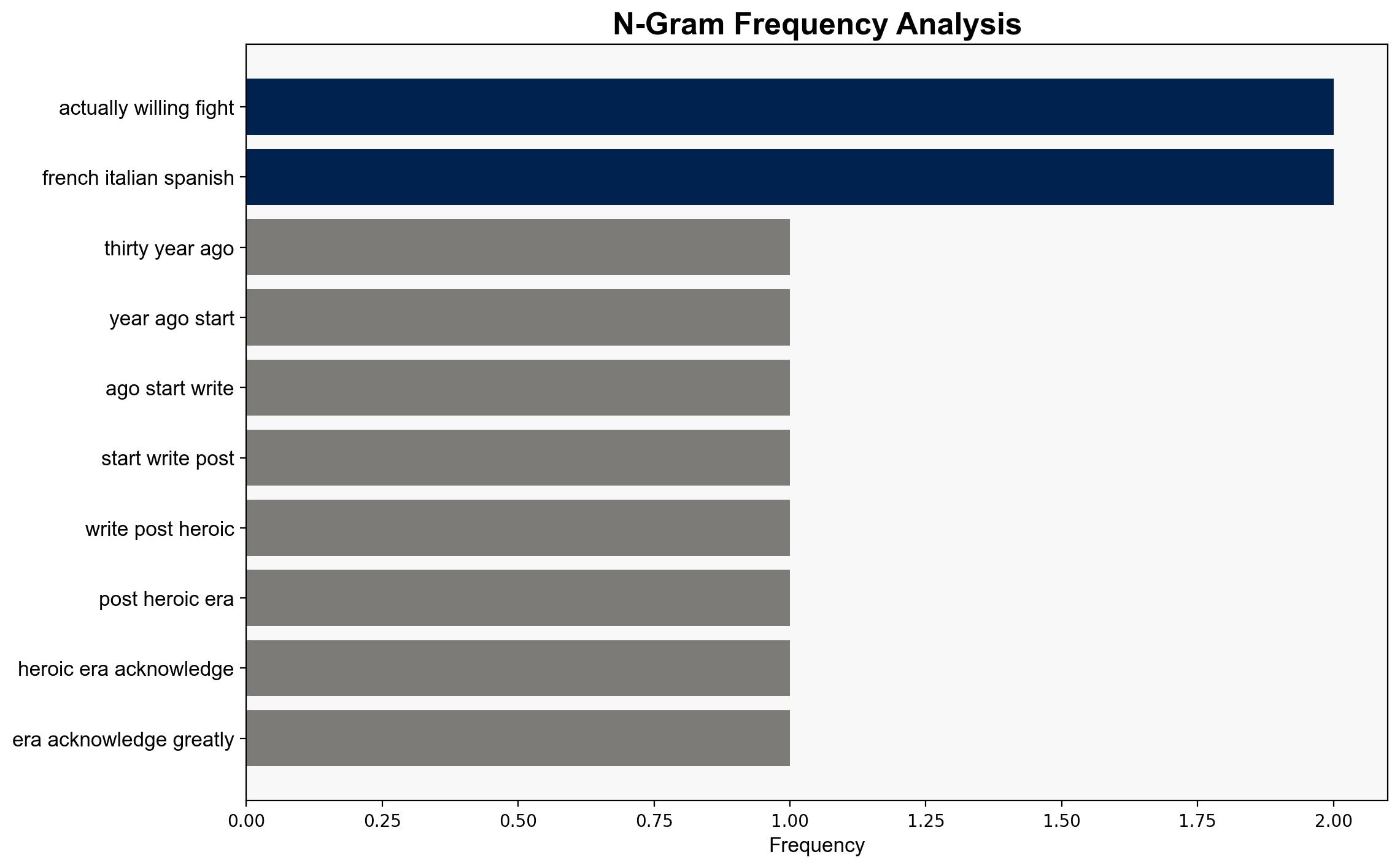The Post-Heroic Era And Beyond An Historical Assessment Of European Armed Forces – Hoover.org
Published on: 2025-08-18
Intelligence Report: The Post-Heroic Era And Beyond An Historical Assessment Of European Armed Forces – Hoover.org
1. BLUF (Bottom Line Up Front)
The analysis suggests that European armed forces are experiencing a strategic shift due to demographic changes and evolving geopolitical dynamics. The most supported hypothesis is that European nations will increasingly rely on technological advancements and international alliances to compensate for reduced manpower. Confidence level: Moderate. Recommended action: Enhance collaborative defense initiatives and invest in military technology to address manpower shortages.
2. Competing Hypotheses
1. **Hypothesis A**: European countries will continue to experience a decline in military engagement due to demographic challenges and societal aversion to casualties, leading to a reliance on diplomatic and economic tools for conflict resolution.
2. **Hypothesis B**: European nations will adapt to demographic constraints by increasing defense spending on technology and forming stronger alliances, particularly within NATO, to maintain military effectiveness.
Using the Analysis of Competing Hypotheses (ACH) 2.0, Hypothesis B is better supported due to recent trends in defense spending and technological investments, as well as increased collaboration within NATO.
3. Key Assumptions and Red Flags
– **Assumptions**: Both hypotheses assume that demographic trends will continue to impact military recruitment negatively. Hypothesis B assumes that technological advancements can effectively substitute for manpower.
– **Red Flags**: The assumption that technology can fully compensate for reduced troop numbers may overlook the complexity of modern warfare. Additionally, reliance on alliances assumes consistent political will across member states, which may not hold in times of crisis.
4. Implications and Strategic Risks
– **Implications**: A shift towards technology and alliances could lead to increased dependency on cyber capabilities and a potential arms race in military technology. This may also strain economic resources if not managed efficiently.
– **Strategic Risks**: Potential risks include over-reliance on technology that may be vulnerable to cyber threats and the possibility of weakened military readiness if alliances falter. Geopolitical tensions could escalate if adversaries perceive European forces as weakened.
5. Recommendations and Outlook
- Enhance investment in military technology, focusing on cybersecurity and unmanned systems.
- Strengthen NATO and EU defense collaborations to ensure cohesive responses to threats.
- Scenario Projections:
- Best Case: Successful integration of technology and alliances leads to a robust defense posture.
- Worst Case: Technological reliance fails under cyber attacks, and alliances weaken, leading to strategic vulnerabilities.
- Most Likely: Gradual adaptation with mixed success in technology integration and alliance cohesion.
6. Key Individuals and Entities
– Emmanuel Macron (mentioned in context)
– NATO
– European Union
7. Thematic Tags
national security threats, military technology, NATO, European defense strategy




